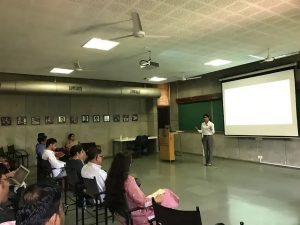A New Paradigm for Contracts

Full disclosure- I’m a lawyer.
And just like most other professional pursuits, being a lawyer affects the way you think and the manner in which you perceive the world. But this field also makes you cognizant of the way in which the world perceives you and your industry.
The legal world has always been seen as a black box- a space that a layman cannot hope to understand though so much of the legal world has to deal with the everyday rights of people and the way in which they interact with each other and institutions.
Is it because ‘legalese’ is considered intimidating? Very often, there is reproach over the complicated language used. Let me tell you- the language used is, most of the time, specifically designed and chosen to comprehensively cover the interests of the people involved. But turns out, in setting up this language, the contracts are pushing away the very people it is trying to protect.
In most cases we choose to not engage with these lengthy contracts because it is either too time consuming or we think there will be no consequences to our choices (All iTunes users- I’m looking at you).
But how about a scenario where the contract we enter into does have more of an impact on our life- surely we are more vigilant then?
We are definitely better informed when we are signing an agreement to avail of a loan or while leasing an apartment. We ensure that we know what we are signing up for and our rights and duties and that we responsibly adhere to the contract.
Unfortunately, not everyone is. Not everyone is as well informed and not everyone is as aware of their rights.
This is not as a result of the contract being too time consuming or the perception of no consequences. The barriers could simply be literacy or language.
An article published in The Wire late last year broke a story of how officials of a major private sector bank were mis-selling insurance policies with exorbitant premiums to farmers under the guise of a fixed deposit. Resulting in hundreds of farmers losing their entire life savings in one fell swoop.
There are multiple factors that lead to such large scale fraud and the lack of comprehension of the contract terms is just one of them. However, it is the factor that most commonly ties in a large amount of fraud perpetrated- Information Asymmetry.
Standardised financial transactions almost characteristically lack equal negotiating power on both sides but the inability to even recognise the document that you are signing on; gives it a whole other dimension.
The MoonShot
Which brings us to the proposal at hand- can we create a system that attempts to overcome language and literacy barriers, at least in carrying out transactions that affect our daily lives?
The hypothesis is that a standardised widely used graphical language can help communicate or indicate key rights and obligations.
Graphical languages have already found varying levels of success in several sectors. One commonly seen use case is in ATMs- they are a great example of how with basic training, a graphical language can be widely understood and used. Airline safety manuals being another great example of assisted graphical communication.
In extrapolating this concept, can we achieve such communication success in standardised contracts? This proposal seeks to explore this idea and setup a graphical language asset set to better understand contracts.
In the scope of this project- the idea would be to address data privacy contracts and basic financial transactions.
And this is not an exercise in building ‘good-to-haves’. This is a substantial gap in our society that is imperative to address.
In India, there is currently a wave of technology infrastructure being built by government bodies that promise to make substantial changes to the way in which the average Indian’s lifestyle- from the way he banks, avails of government services and seeks utilities. Almost all of these interactions are anchored in the concepts of consent and affirmation by the user. Informed decision making is the bedrock of all contracts and all social interaction and by not creating a language that can be widely understood by all parties, we are essentially breaking the social convention on which we choose to run.
In creating this language and conducting user tests, it is important to take on board feedback from not only the target audience of the language but also the contract creators. The contract creators would involve lawyers as well as the management of organisations who would give insights on how comfortable they are in implementing such a graphic language- both from a legal compliance as well as operational and cost perspective.
This language takes on its full gamut only when it is standardised and widely implemented leading to accelerated learning and understanding of the graphics involved. And in such wide implementation, it would be important to have the buy-in of all the stakeholders that can be hoped to evangelise such a system.
The goal of the project is simply this- to address that information asymmetry is just one more social inequality that challenges the millions of Indians and one that needs to be addressed as we try to usher in our country into a new economic and digital age.
This project hopes to be a part of that conversation and make an effort towards bridging that information asymmetry for contracts.
This research was developed as part of the Bharat Inclusion Research Fellowship.
